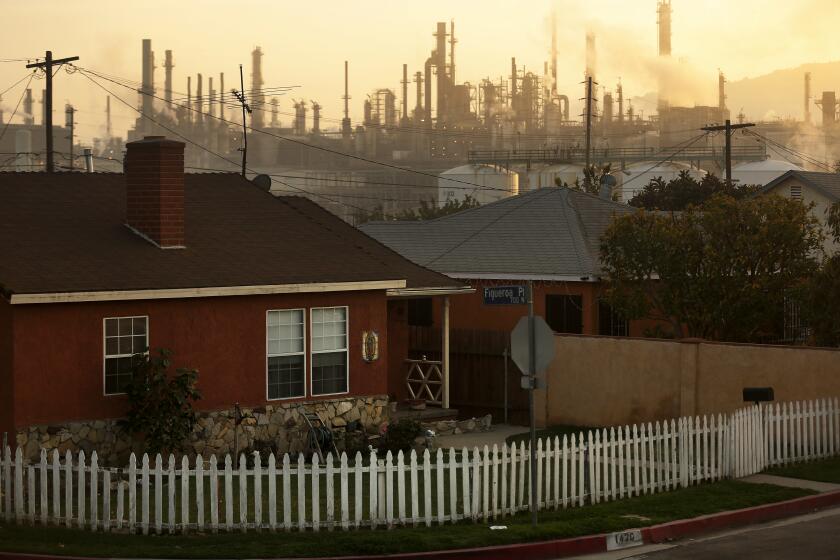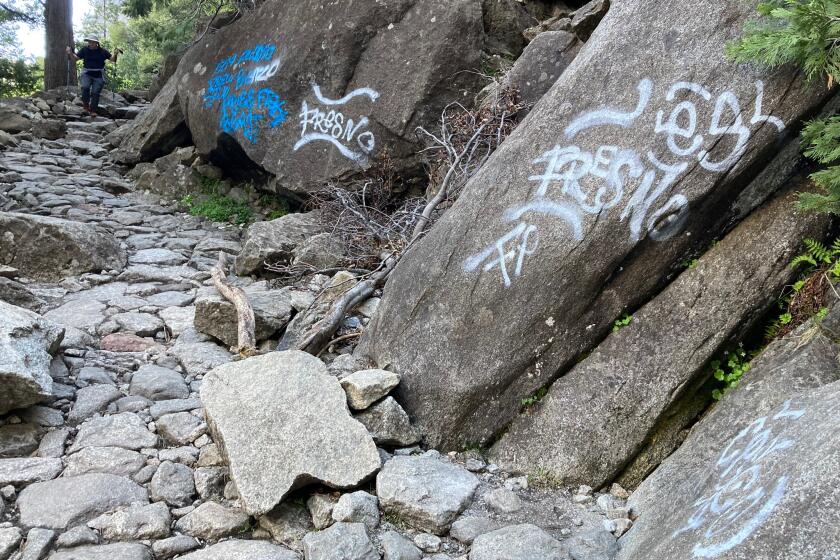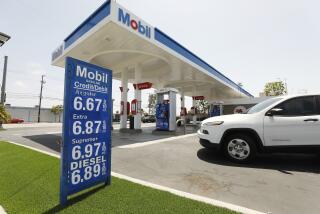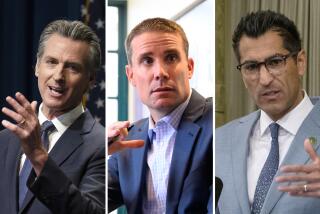Editorial: Gov. Newsom’s plan to prevent power outages has a big downside: fossil fuels

- Share via
Gov. Gavin Newsom, worried about the threat of power shortages from climate-fueled heat waves, wildfires and drought as the state transitions to renewable energy, has crafted something of a devil’s bargain. To ensure California can keep the lights on during hot summer evenings when the power grid is at highest risk of outages, he wants to pump billions of public dollars into fossil fuel infrastructure.
A strategic electricity reliability reserve, included in Newsom’s May budget proposal, would spend billions of dollars over the next five years to put in place enough generating capacity to produce up to 5,000 megawatts of electricity in times of high demand. But it relies mostly on extending the life of gas-fueled plants along the Southern California coast that are scheduled to retire in the next few years. Some of the money, to be administered by the Department of Water Resources, would also pay for new industrial-sized natural gas generators that could be fired up when needed among other projects aimed at girding the state against blackouts.
Doing more to prevent power outages is an urgent and worthwhile project. Not only does losing power during heat waves place people in danger, it would be a black eye on California’s climate agenda, eroding public confidence during a crucial transition from a largely fossil-fueled grid to one dominated by renewable energy. But the governor’s solution leans far too heavily on the same polluting facilities that we should be retiring as quickly as possible to prevent a disastrous overheating of the planet.
California’s plan to reach net-zero emissions by 2045 shows little ambition for accelerating climate action and must be strengthened to cut more pollution faster.
Newsom’s administration is pushing the generating reserve to address concerns that extreme heat, wildfires and other stressors, when combined, could result in more demand than supply during hot summer months, particularly in the early evening hours in August and September. Officials point to the intense heat wave in August 2020 that led to the state’s first rolling blackouts in nearly two decades and the Bootleg fire in Oregon that in July 2021 knocked out transmission lines that send electricity from the Pacific Northwest into California.
Drought has only added to the uncertainty by reducing the availability of hydroelectric power, as have supply-chain shortages and delays in the construction of renewable energy and battery storage projects. These overlapping conditions, the Newsom administration warns, could cause energy shortfalls over the next few summers when the state’s solar power generation drops off at night but high demand for air conditioning persists.
Newsom administration officials said the reserve of mostly fossil-fuel energy would be temporary insurance to keep the lights on while the state brings more clean energy and storage online over the next five years. They argue this plan will protect against outages without derailing California’s progress toward getting 100% of its electricity from renewable and zero-carbon sources by 2045.
Some state lawmakers are skeptical of Newsom’s contingency plan, and they should be. As part of the closed-door negotiations in advance of the June 30 deadline to finalize the state’s budget, legislators should push the governor to devote more of the money allocated for the reserve to building more renewable energy generation and storage and expanding programs to reduce power consumption during grid emergencies.
What is it about the human condition that we will travel to a place of sublime natural splendor, and then trash it?
The state could soon experience heat waves and other climate extremes so severe that there may be no way to avoid ramping up fossil fuels in the short-term. But the effects could be offset with far greater use of demand-response programs that avoid the need for extra power generation in the first place — such as a state Public Utilities Commission program created last year that pays power users to temporarily reduce their consumption during grid emergencies. While the proposal includes some money for renewable energy, such as fuel cells, and for programs to reduce demand for electricity, it is built mostly around burning fossil fuels and does not do nearly enough to support solutions that do not pollute.
It should be clear that funding polluting plants and generators runs counter to California’s climate and environmental justice agenda. State energy officials said the reserve would be called up only during the most extreme conditions, estimating it would be needed less than 50 hours a year. But the plan needs more guardrails, including provisions that would allow the use of fossil-fueled power sources only as a last resort, and more equity protections to ensure that new generators are not placed in communities of color and other disadvantaged areas that already suffer the health consequences of higher exposure to pollution.
Don’t fear L.A’s gas appliance ban. The future is electric.
The power plants scheduled for retirement in the next few years that could be extended as part of Newsom’s reliability reserve include more than half a dozen gas plants in Huntington Beach, Long Beach, Ormond Beach, Playa del Rey, Redondo Beach and Wilmington, according to the California Energy Commission. The long-planned closure of Diablo Canyon, the state’s last nuclear plant, may also be delayed as part of the contingency plan. Newsom said in an April interview with the Times editorial board that he was reconsidering its closure and may attempt to prolong its operation over concerns about grid reliability.
It’s worth noting that some of the gas plants that could be part of the reliability reserve have been in operation since the 1960s or earlier and haven’t been especially reliable when temperatures soar. Politico reported last year that some of the plants, “old clunkers” whose lives have already been extended, broke down during heat waves in 2020 and 2021 because of equipment failures fueled by extreme heat.
In the best-case scenario, Newsom’s idea could truly operate like an insurance policy: The state pays for the ability to produce power that it never, or seldom, needs to call on. But his plan risks throwing too much support behind old, dirty and harmful technology.
We can’t allow fear of blackouts to become more justification for extending our reliance on fossil fuels. We need an insurance policy based on renewable energy, storage and conservation to build a climate-friendly grid over the long term.
More to Read
A cure for the common opinion
Get thought-provoking perspectives with our weekly newsletter.
You may occasionally receive promotional content from the Los Angeles Times.













